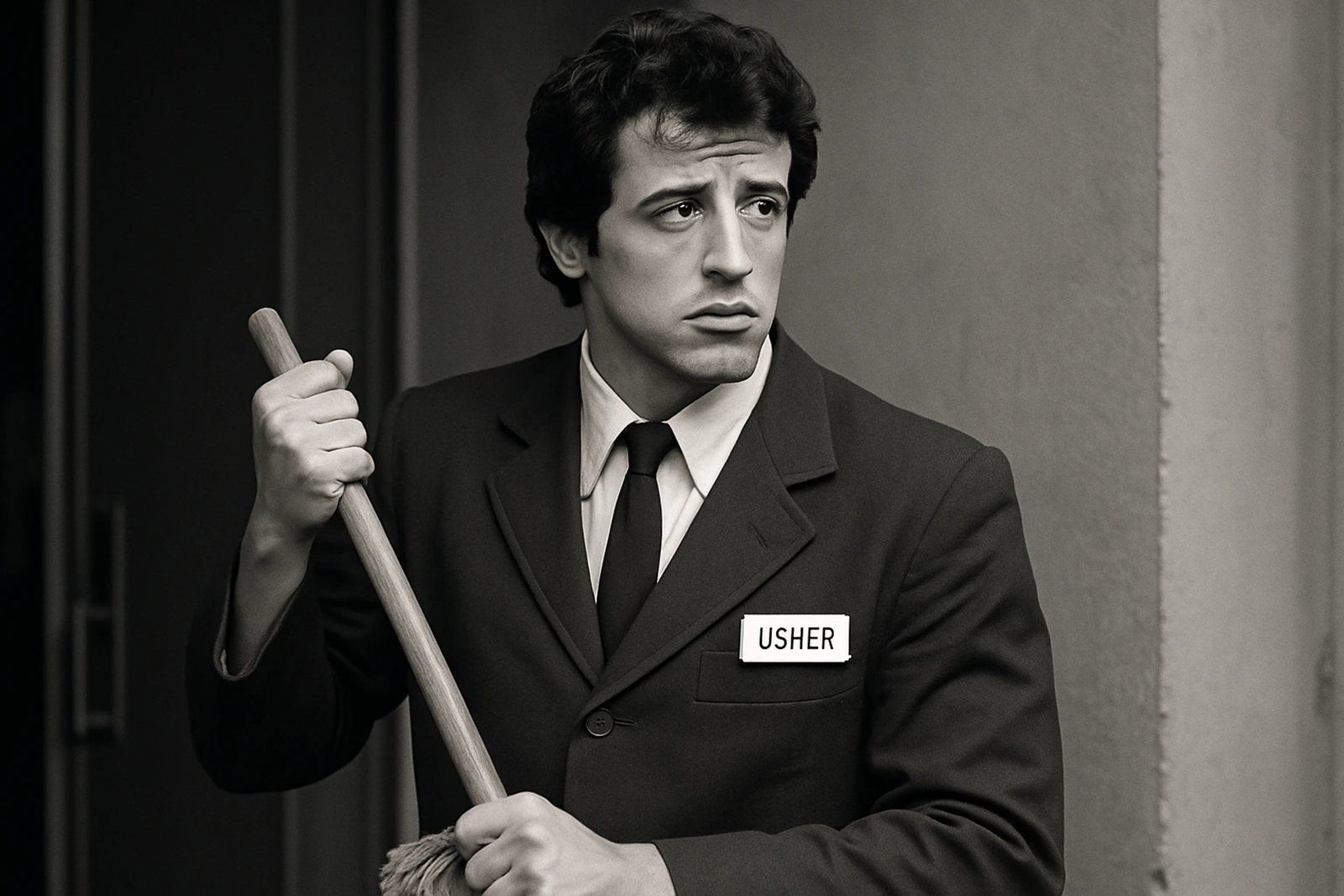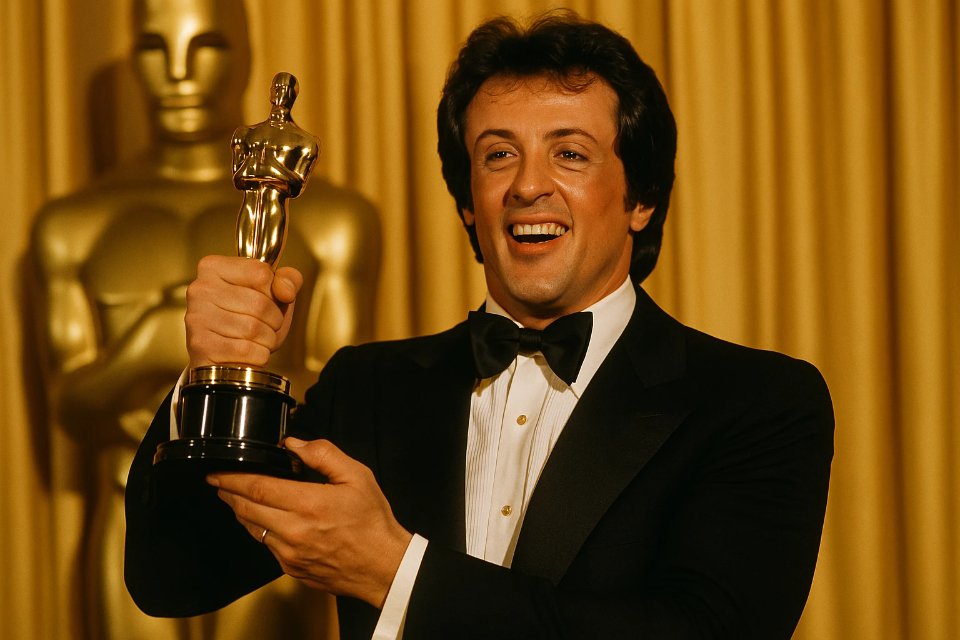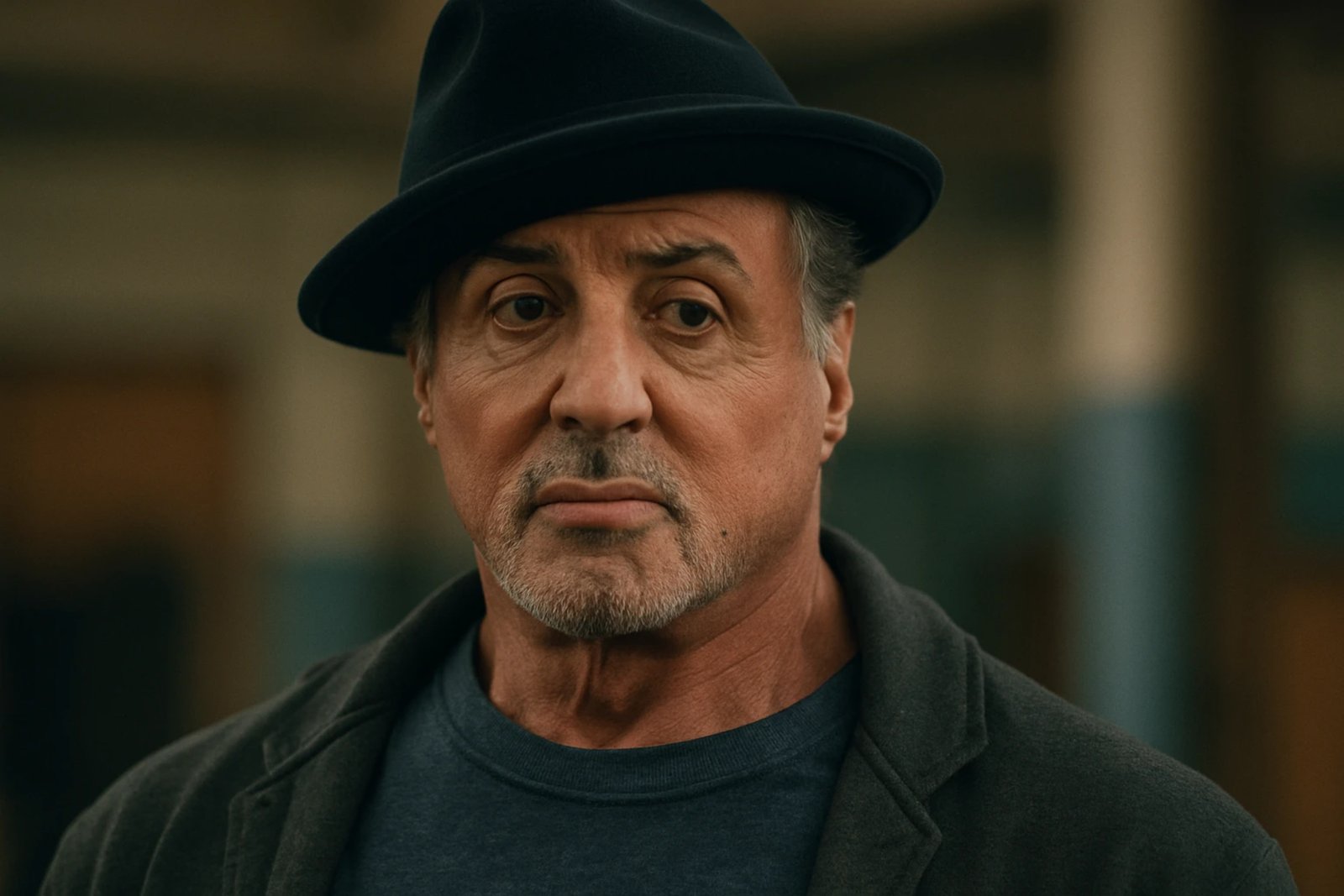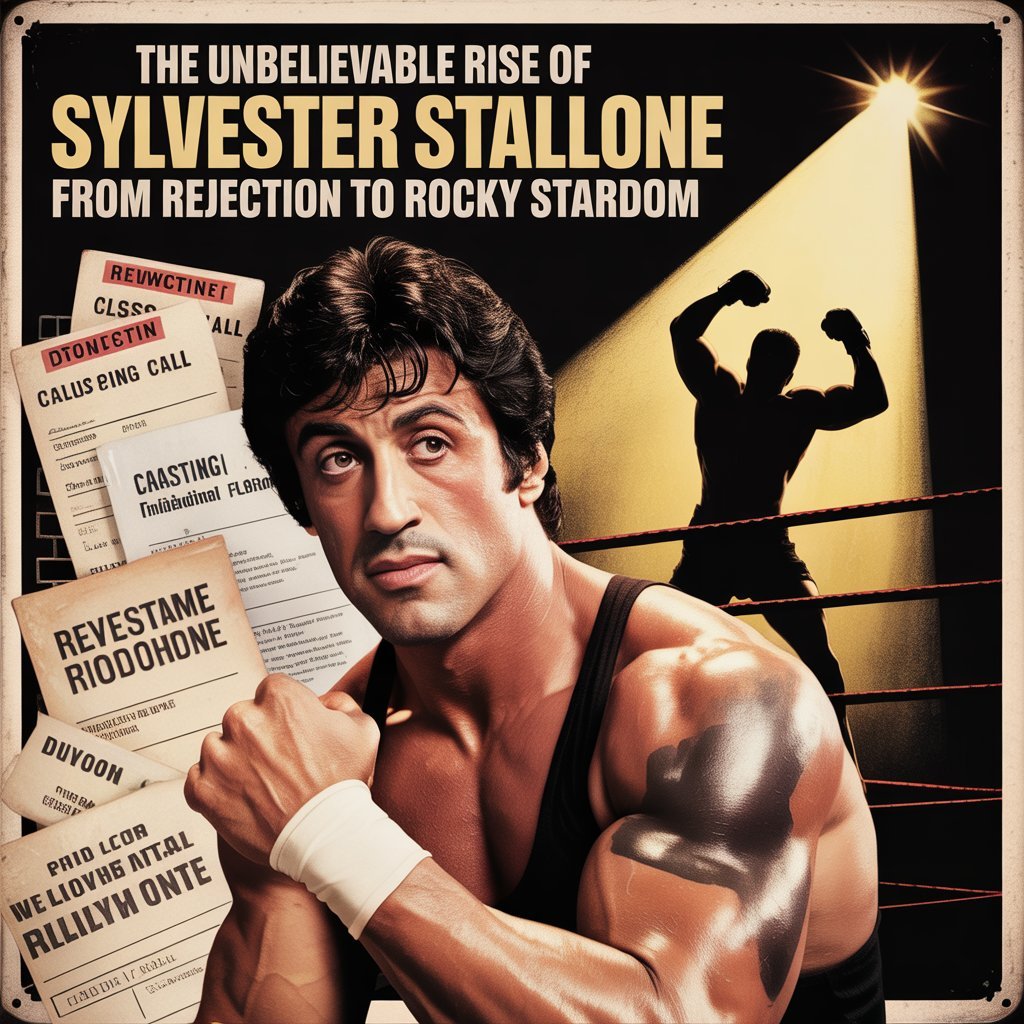The Unbelievable Rise of Sylvester Stallone From Rejection to Rocky Stardom
No matter how hard you try to get back up, have you ever felt like life keeps knocking you down?Well, you’re not unique.Let’s explore the amazing true story of Sylvester Stallone, a story so motivating that it rivals the fictitious quest of his most well-known persona, Rocky Balboa.
The Early Days: When Life Threw More Punches Than Sylvester Stallone Could Take
Born in Manhattan’s Hell’s Kitchen, Sylvester Gardenzio Stallone did not exactly have the silver spoon treatment.Facial paralysis resulted from difficulties encountered during his birth, which gave him his trademark mumbled speech and crooked smile.Discuss beginning life at a disadvantage!
By the way, those early physical challenges would later become part of his unique charm, but back then? They were just another obstacle in a long line of them. His parents’ rocky marriage led to a string of relocations, and young Sylvester Stallone found himself shuffled between various schools and neighborhoods.
In truth, it was not the best starting point for an aspiring Hollywood star.Following expulsion from several schools, Sylvester Stallone finally discovered his interest in drama college; however, even that road was not smooth sailing.From serving as an usher to cleaning lion enclosures at Central Park Zoo, he had to take on strange jobs like many other aspiring artists to support himself.

The Rock Bottom Moment That Changed Everything
Visualize this: It’s 1974 and you are looking at your bank account.The general result?An incredible $106.That’s right.Financially and emotionally, Sylvester Stallone was at his very lowest point.During the frigid New York winter, he couldn’t even afford to warm his tiny flat.
Let me ask you something – what would you do in that situation? Most people would pack their bags, head home, and give up on their dreams. But not Sylvester Stallone . Instead, he did something that would change his life forever.
After watching the Muhammad Ali vs. Chuck Wepner fight in 1975, where the underdog Wepner went 15 rounds with the champion, Sylvester Stallone had an epiphany. He saw a story that needed to be told the story of an underdog boxer who gets his shot at the title, not necessarily to win, but to go the distance.
Writing “Rocky” in Three Days: Inspiration Meets Desperation
Sylvester Stallone did something amazing with that inspiration.Locked in a room, he wrote the whole Rocky screenplay in three days.Three days!That’s less time than most of us need to complete a Netflix series.
The script poured out of him like water from a fire hydrant raw, emotional, and deeply personal. It wasn’t just a boxing story; it was a metaphor for his own struggles, his own determination to prove himself against all odds.
Honestly, reading the script today, you can feel Sylvester Stallone’s desperation and determination in every line. He wasn’t just writing a character he was writing himself, his hopes, his fears, and his unwavering belief that he had something valuable to offer the world.

The Rejection Marathon: When Hollywood Said “No” Over 1,500 Times
Now, here’s where the story gets really interesting and frankly, pretty discouraging if you’re not Sylvester Stallone. Armed with his Rocky script, Stallone began shopping it around Hollywood. And the response? A resounding “no” over and over again.
Incidentally, we are not discussing just a few rejections here.We are discussing over 1,500 rejections here.That is enough to cause even the most self-assured individual doubt their skills and their goals.With many claiming the screenplay was too predictable or that boxing movies don’t sell, studio after studio rejected him.
But wait it gets even more frustrating. Several studios actually wanted to buy the script, but with one condition: Stallone couldn’t star in it. They offered him hundreds of thousands of dollars a fortune for a guy with $106 in his bank account but Stallone refused.
Think about saying no to that much cash when you’re out of money. It’s like being given a life raft in the sea, but saying, “No thanks, I’ll swim.” Stallone was all in on himself, and truly, most folks thought he was nuts.
The Turning Point: When One “Yes” Changed Everything
Stallone at last broke through after what must have seemed like an eternity of rejection.Inspired by his drive and tenacity, United Artists approved Rocky’s production with Stallone in the lead.But there was a catch: the budget by Hollywood standards was tiny.
We’re talking about a budget of just $1 million pocket change in the movie industry. Stallone had to make sacrifices, taking a salary of just $35,000 for writing and starring in the film. But he didn’t care; he finally had his shot.
Shooting Rocky was anything but easy, let me tell you.Many scenes had to be shot guerrilla style, sans permission, because the budget was so small.The iconic sequence Rocky sprints up the Philadelphia Museum of Art steps?Because they lacked money to obstruct the region for lengthy shooting, it was shot in only a few takes.
Stallone threw himself into the role, training relentlessly to embody the character of Rocky Balboa. He wasn’t just acting he was living the part, pushing his body to its limits just like his character did in the story.

Rocky’s Release The Underdog Story That Mirrored Real Life
Nobody could have foreseen what would follow when Rocky opened in theaters in 1976.Made on a small budget, the movie grew to be a national sensation.Critics loved it, audiences adored it, and box office receipts exceeded $225 million.
Let’s put that in perspective: that’s a return of more than 225 times the initial investment. In business terms, that’s not just a home run; it’s a grand slam in the bottom of the ninth inning of the World Series.
The finishing touch on the cake is icing.Rocky was nominated ten Academy Awards, including Best Actor and Best Original Screenplay for Stallone.It then picked three, including Best Picture, edging out significant competitors like Taxi Driver and All the President’s Men.
By the way, Stallone became only the third person in history to be nominated for both Best Actor and Best Original Screenplay for the same film. Not bad for a guy who was rejected over 1,500 times, right?
Lessons from Stallone’s Journey What We Can Learn from His Persistence
So, what can we mere mortals learn from Sylvester Stallone’s incredible journey? Let’s break it down
Believe in yourself even when nobody else does. Stallone’s unwavering belief in his vision and his abilities is what kept him going through countless rejections.
Don’t compromise on your non negotiables. Stallone refused to sell the script without starring in it, even when offered life-changing amounts of money.
Turn your disadvantages into strengths. His unique look and speech, which could have been seen as obstacles, became part of his distinctive appeal.
Success often comes when you’re at your lowest point. Stallone wrote Rocky when he had just $106 to his name, proving that desperation can be a powerful motivator.
Rejection is redirecting rather than the finish.Each no moved Stallone closer to the right yes.
To be honest, using these teachings to our own lives might not turn us into movie stars, but they can enable us to overcome challenges and go after our goals with the same tenacity Stallone exhibited.

Beyond Rocky How Stallone Continued to Defy the Odds
You might think that after the massive success of Rocky, Stallone’s path was clear sailing. But like any good story, his journey had its share of ups and downs.
His success in establishing action icon status came from his numerous popular franchises, including Rambo and The Expendables.He also had his fair share of critical and commercial failures, though.Recall Rhinestone or Stop! or Will My Mom Shoot?Yeah, we try not to either.
Actually, Stallone’s resilience is rather astounding.He never lost his battle attitude even when his job ran into challenges.Still writing, producing, and acting in movies, he always moved ahead.
In recent years, Stallone has experienced a career renaissance with the “Creed” films, where he reprised his role as Rocky Balboa, this time as a mentor. The performance earned him a Golden Globe win and another Oscar nomination, proving that even in his 70s, he still had what it takes to captivate audiences.
FAQ: Sylvester Stallone’s Journey to Success
Q: How many times was Sylvester Stallone rejected before Rocky?
A: Stallone faced over 1,500 rejections for the Rocky script before finally getting a “yes” from United Artists.
Q: Did Sylvester Stallone really write Rocky in three days?
A: Yes, Stallone wrote the entire first draft of the Rocky screenplay in just three days after being inspired by the Muhammad Ali vs. Chuck Wepner fight.
Q: Sylvester Stallone before Rocky had how much money.
A: Stallone only had $106 in his bank account before Rocky.He was so broke that he lacked the money to heat his home in the winter.
Q: Did Sylvester Stallone turn down money for the Rocky script?
A: Yes, Stallone turned down multiple offers of hundreds of thousands of dollars from studios that wanted to buy the script but cast someone else in the lead role.
Q: How much did Rocky make at the box office?
A: Rocky, made on a budget of just $1 million, grossed over $225 million at the box office, making it one of the most profitable films of all time.
Q: Sylvester Stallone has any Oscars?
A: Rocky garnered three Academy Awards, including Best Picture.Stallone was nominated for Best Actor and Best Original Screenplay, but he did not win in those categories.He got a unique prize at the 2016 Oscars though.

Conclusion Writing Your Own Rocky Story
Sylvester Stallone’s journey from rejection to success isn’t just a Hollywood fairytale it’s a testament to the power of perseverance, self-belief, and refusing to take “no” for an answer. His story reminds us that success often comes not when everything is going right, but when everything seems to be going wrong.
Most of us will never write a blockbuster screenplay or become actors, let’s be honest.However, rejection, doubt, and apparently insurmountable obstacles are experienced by each of us in our own forms.Stallone’s narrative shows us that rather than define us, these difficulties can refine us.
Then your rocky narrative is? Against all odds, what ambition are you following?Whatever it is, recall Stallone’s trip and keep moving.You never know when that one yes will come following a thousand no’s.
Ready to compose your own success narrative? Begin today by taking one little step toward your goal, no matter how modest it may seem. After all, every great voyage starts with one stride or, in Stallone’s case, one screenplay written in three desperate days. You can explore more about Sylvester Stallone’s life and achievements on Wikipedia, and if you’re looking for career insights, motivation, or practical strategies to shape your own journey, Careerizo has resources to guide you.


